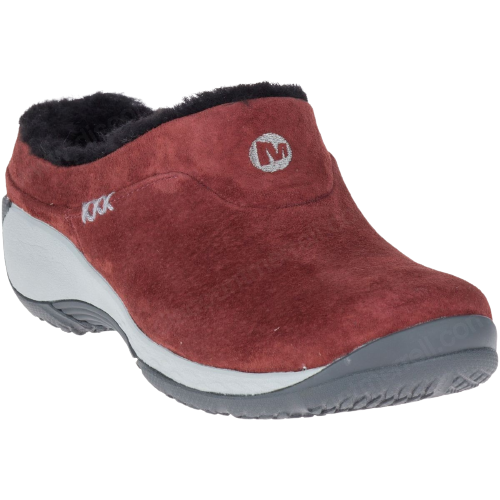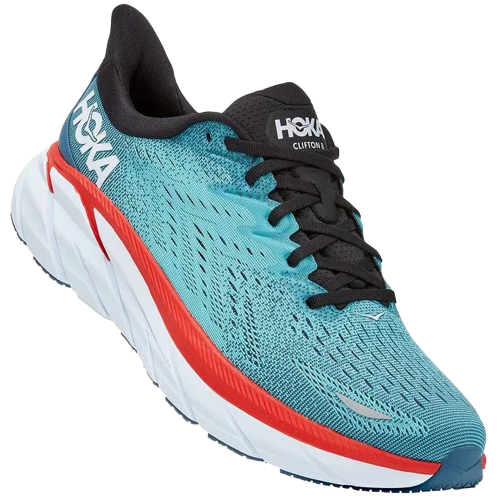
Bunions are a common foot deformity that can be painful and difficult to treat. While there are many surgical options to correct bunions, many people are looking for nonsurgical treatments.
Can Shoes Correct Bunions? One nonsurgical treatment option is the use of shoes to correct bunions. Shoes that are designed to correct bunions can provide relief from pain and help to slow the progression of the deformity. You should also wear bunion socks for bunion pain relief.
You have bunions and are looking for a solution. Surgery is expensive, painful, and can take months to heal.
Contents
- 5 Best Shoes For Bunions 2023 (Deals)
- Buying Guides
- 1. Find the Right Shoe Size
- 2. Choose a Style That Fits Well and Is Comfortable
- 3. Wear Your Shoes All Day Long
- 4. Use a Heel Cushion or Insert if Needed
- 5. Avoid Wearing High Heels
- 6. Apply Heat Therapy or Ice Packs to the Feet Occasionally
- 7. Take Painkillers If Necessary
- 5 The Best Bunions Shoes In The World
- 1. Vionic Avery Pro Suede
- 2. Altra Provision 4 Sneaker
- 3. Merrell Women’s Encore Q2 Ice
- 4. Hoka, Clifton 8
- 5. Allbirds, Women’s Wool Runner-Up Mizzles
- Frequently Asked Questions by People:
- Conclusion
5 Best Shoes For Bunions 2023 (Deals)
Buying Guides
Correct Bunions is a set of custom-made orthotics that correct bunions. They are designed to fit in your shoes and are easy to use. Before Buying Bunnions shoe consider the following things:
1. Find the Right Shoe Size
If you have a bunion, it is essential to find the right shoe size. Shoes can help to correct bunions by providing support and cushioning. It is essential to find a shoe that fits well and feels comfortable. You may need to try on different sizes until you find the one that fits your feet perfectly.
2. Choose a Style That Fits Well and Is Comfortable
When it comes to finding the right type of shoe to correct bunions, there are a few things you need to consider. The most crucial factor is the style of shoes. You’ll want something that fits well and is comfortable because you’ll be wearing it for a long time. The type of bunions you have will also influence what shoes work best for you.
A low-cut shoe might be best if your bunions are smaller. A high-cut shoe may be better if your bunion is more prominent.
You also want to ensure that the shoe has good arch support to conform to your foot correctly and helps reduce pressure on your bunion. And lastly, make sure that the material is breathable so that you don’t get too hot or too cold while wearing them.
Many different types and styles of shoes available can help correct bunions, so it’s important to find something that fits well and makes walking more comfortable.
3. Wear Your Shoes All Day Long
When it comes to bunions, the answer may surprise you. Contrary to popular belief, shoes do not work well as a treatment option for bunions. In fact, many people find that wearing their shoes all day long exacerbates the condition.
One of the main reasons why shoes aren’t effective in treating bunions is because they don’t offer enough support. When you wear tight-fitting shoes puts extra pressure on the bunion area. This pressure can cause inflammation and even more pain. Additionally, wearing shoes all day long can also lead to other foot problems such as pronation (a condition in which the foot rolls inward).
If you have a bunion and are considering using shoes as a treatment option, it is important to first consult with a doctor. They will be able to provide you with more information about whether or not footwear is an appropriate solution for your particular case.
4. Use a Heel Cushion or Insert if Needed
If you have a bunion, it may be helpful to use a heel cushion or insert. This will help correct the position of your foot and relieve some pain. If you don’t have a bunion but are experiencing foot pain, consider wearing shoes that fit well and provide adequate support.
5. Avoid Wearing High Heels
High heels can cause bunions, a type of foot deformity. Bunions occur when the ball of the foot is pushed too far forward, causing the bone to rub against the sensitive surface of the skin. This can cause pain and inflammation, which may lead to deformity.
While there is no cure for many types of bunions, wearing shoes that fit well and avoiding high heels can help relieve some of the pain and inflammation. If you have a history of bunions or are experiencing pain in your feet from wearing high heels, it is best to see a doctor for further evaluation.
6. Apply Heat Therapy or Ice Packs to the Feet Occasionally
There is no one-size-fits-all answer to this question, as the best approach for treating bunions may differ depending on the severity of the condition and the individual’s lifestyle. However, some treatments that may be effective include heat therapy or ice packs applied to the feet occasionally.
Applying heat therapy can help soften and relax the tissues around the bunion, which can lead to decreased pain and improved mobility.
Ice packs can also provide relief by reducing inflammation and swelling. However, it is important to note that treatments should not be relied on exclusively; a combination of therapies may be more effective than either option alone.
7. Take Painkillers If Necessary
When bunions occur, they can cause a lot of pain. A doctor may prescribe medication to help relieve the pain. If the pain is severe, a person may need to take medication regularly. Shoes can also help correct bunions. If shoes are uncomfortable, it may be challenging to wear them, and they may not correct the bunion.
5 The Best Bunions Shoes In The World
Here are 5 of the best shoes for after bunion surgery in the world:
1. Vionic Avery Pro Suede
The Vionic Avery Pro is a high-quality suede walking shoe that provides excellent support and comfort.

It is ideal for those looking for a shoe that can be used for casual and more formal occasions.
The Avery Pro features a removable insole, which makes it easy to clean and maintain. It also has a wide-width toe box, allowing plenty of room to move your toes around. Overall, the Vionic Avery Pro is an excellent choice for anyone seeking a comfortable and stylish walking shoe.
2. Altra Provision 4 Sneaker
The Altra Provision 4 Sneaker is a stylish and comfortable walking shoe that wears after bunion surgery that offers great support and cushioning.

It has a breathable mesh upper with a sock-like fit, and a supportive midsole that provides excellent shock absorption.
The outsole is made of durable rubber for good traction on all surfaces. This shoe is available in a wide range of sizes and widths, making it a great option for people with different foot shapes and sizes.
3. Merrell Women’s Encore Q2 Ice

The Merrell Women s Encore Q2 Ice is a stylish and practical winter boot that will keep your feet warm and dry all season long. This boot will keep you comfortable in the coldest weather, with waterproof leather, suede upper, 200-gram insulation, and a fleece lining.
The Vibram Arctic Grip outsole provides excellent traction on icy surfaces, making this boot perfect for those who live in cold climates or spend time outdoors in winter.
4. Hoka, Clifton 8
Hoka’s Clifton 8 is an update to a very popular shoe. The new model features a more comfortable ride and a sleeker design. We put the Clifton 8 to the test to see if it lives up to the hype.

The Clifton 8 is Hoka’s latest update to their very popular Clifton shoe. The new model features a more comfortable ride and a sleeker design. We put the Clifton 8 to the test to see if it lives up to the hype.
So far, we’ve been impressed with the comfort and support of the Clifton 8. The updated design is definitely an improvement over its predecessor. We’ll continue testing the shoes over the next few weeks and will provide a full review soon.
5. Allbirds, Women’s Wool Runner-Up Mizzles

Allbirds, a women’s wool runner-up, has released its new mizzles. The mizzles are made of Merino wool and are designed to keep your feet warm in cold weather. Allbirds is a company known for its sustainable and environmentally friendly products.
The company’s mission is to make the world a better place by making products that are good for the environment and good for people. Allbirds has been recognized as one of the most innovative companies in the world, and its products have been featured in magazines such as Vogue, GQ, and Forbes.
Frequently Asked Questions by People:
Are wide shoes better for bunions?
Is walking barefoot good for bunions?
However, walking barefoot can also aggravate bunions. If you have a bunion, you may consider wearing shoes with a wide-toe box to help reduce pressure on the bunion. Walking barefoot on soft surfaces, such as grass or sand, can also help reduce pain from bunions.
What shoes should I avoid with bunions?
High heels are a big no-no if you have bunions. That’s because they put extra pressure on the front of your feet, which can make your bunions even more pronounced. So if you want to avoid pain and further damage to your feet, stick to flats or low-heeled shoes.
Another shoe to avoid if you have bunions is any shoe that’s too tight. This includes shoes that are too small and don’t have enough room in the toe box. Shoes that are too tight can put pressure on your Bunions and make them even more painful.
How can I shrink my bunions naturally?
However, these procedures should be considered a last resort after all other treatment options have failed. Talk to your doctor about the best treatment if you suffer from bunions. You can shrink your bunions and get back to living pain-free with proper care.
Can you correct a bunion without surgery?
Can Shoes Correct Bunions?
However, some shoes can help correct bunions. Two types of shoes can help correct bunions: orthotic devices and special footwear. Orthotic devices are placed inside the shoe and provide support for the foot.
Special footwear has a wide toe box and does not put pressure on the bunion. Shoes with high heels or narrow toes should be avoided, as they can worsen bunions.
If you have a bunion, talk to your doctor about whether shoes can help correct it. In some cases, surgery may be necessary to remove the bunion.
Conclusion
In conclusion, while shoes cannot actually cure or fix bunions, they can go a long way in managing pain and preventing the condition from worsening.
While there is no one perfect shoe for those with bunions, certain features to look for include a wide toe box, good arch support, and soft, flexible materials.
With the help of a podiatrist, you can find the perfect shoes to help keep your bunions comfortable and under control.